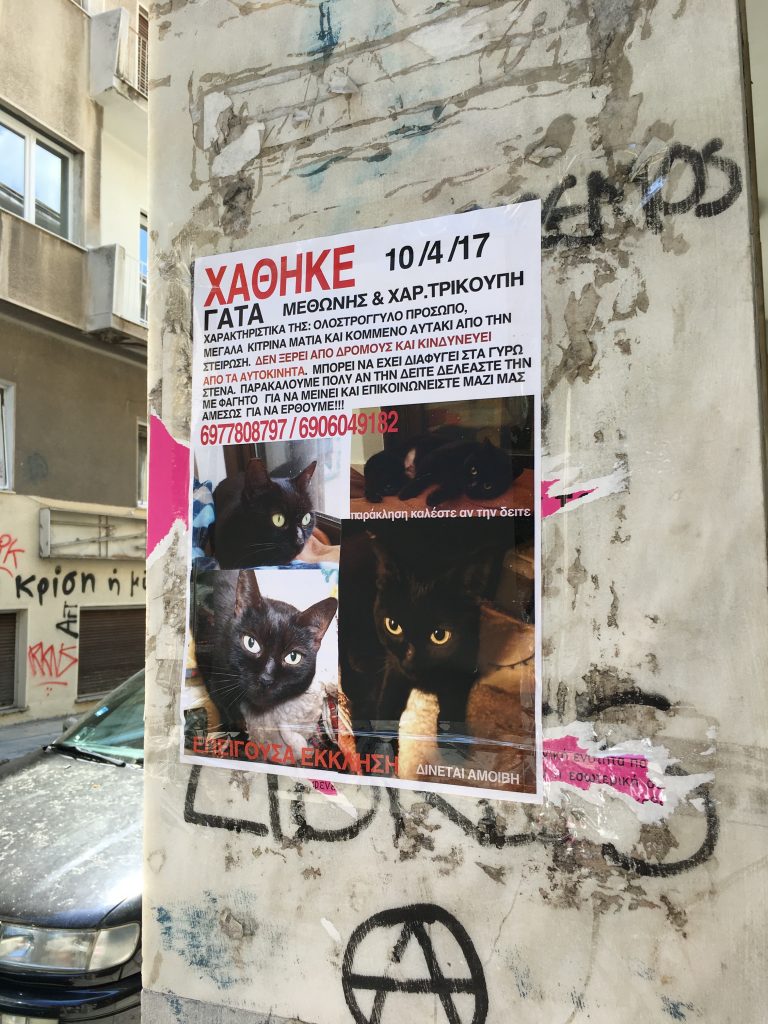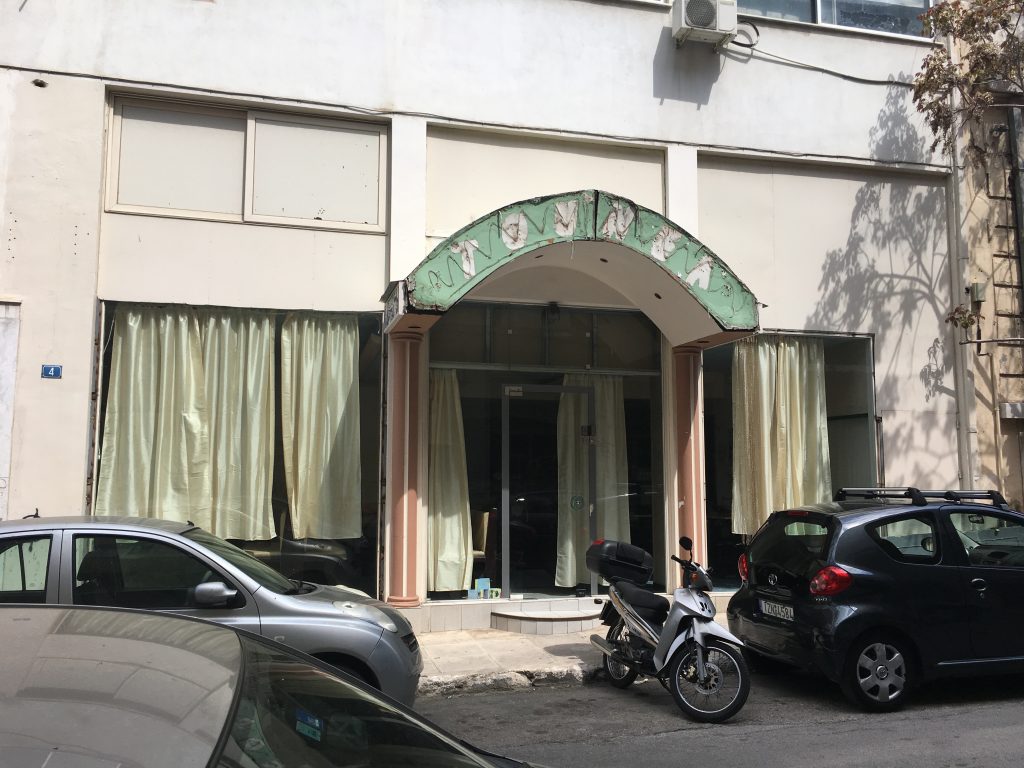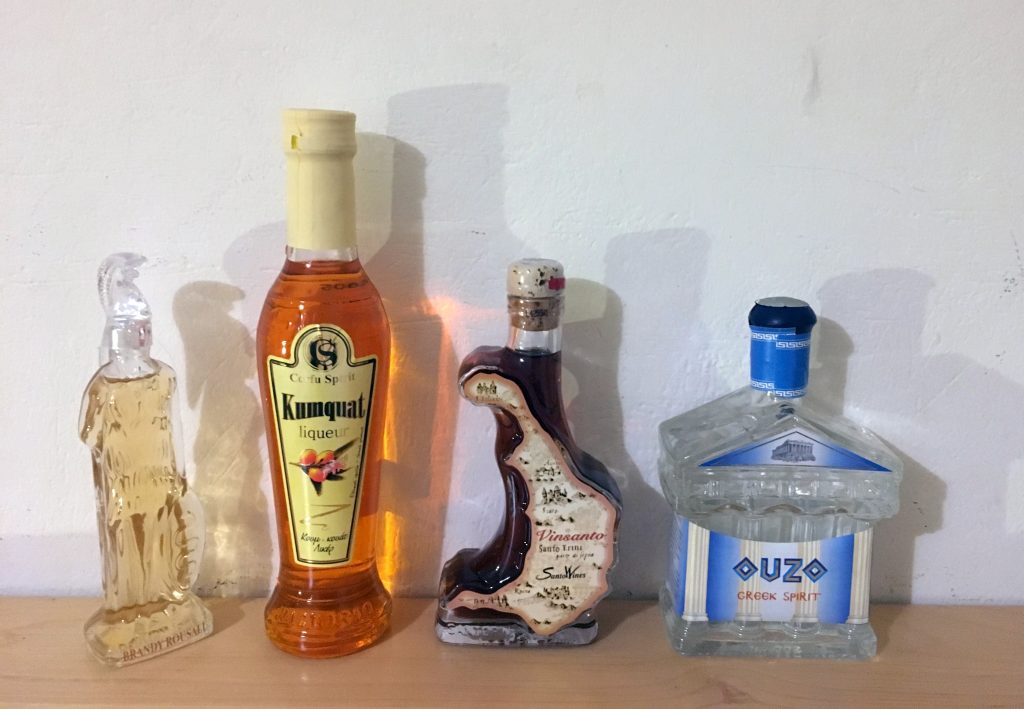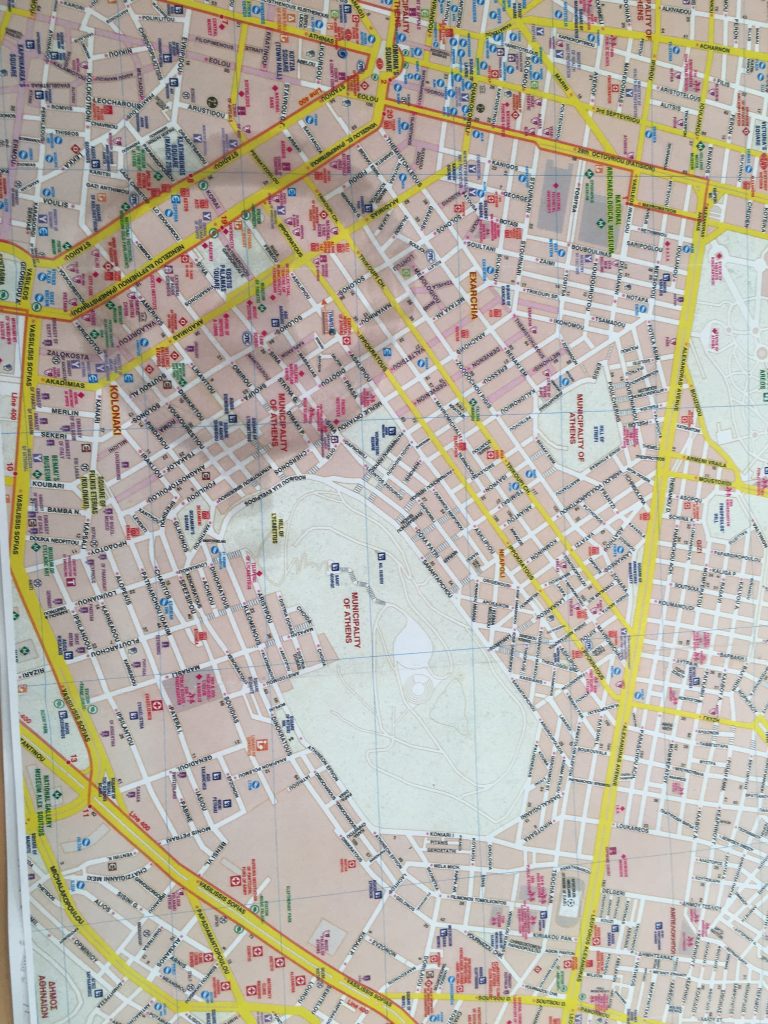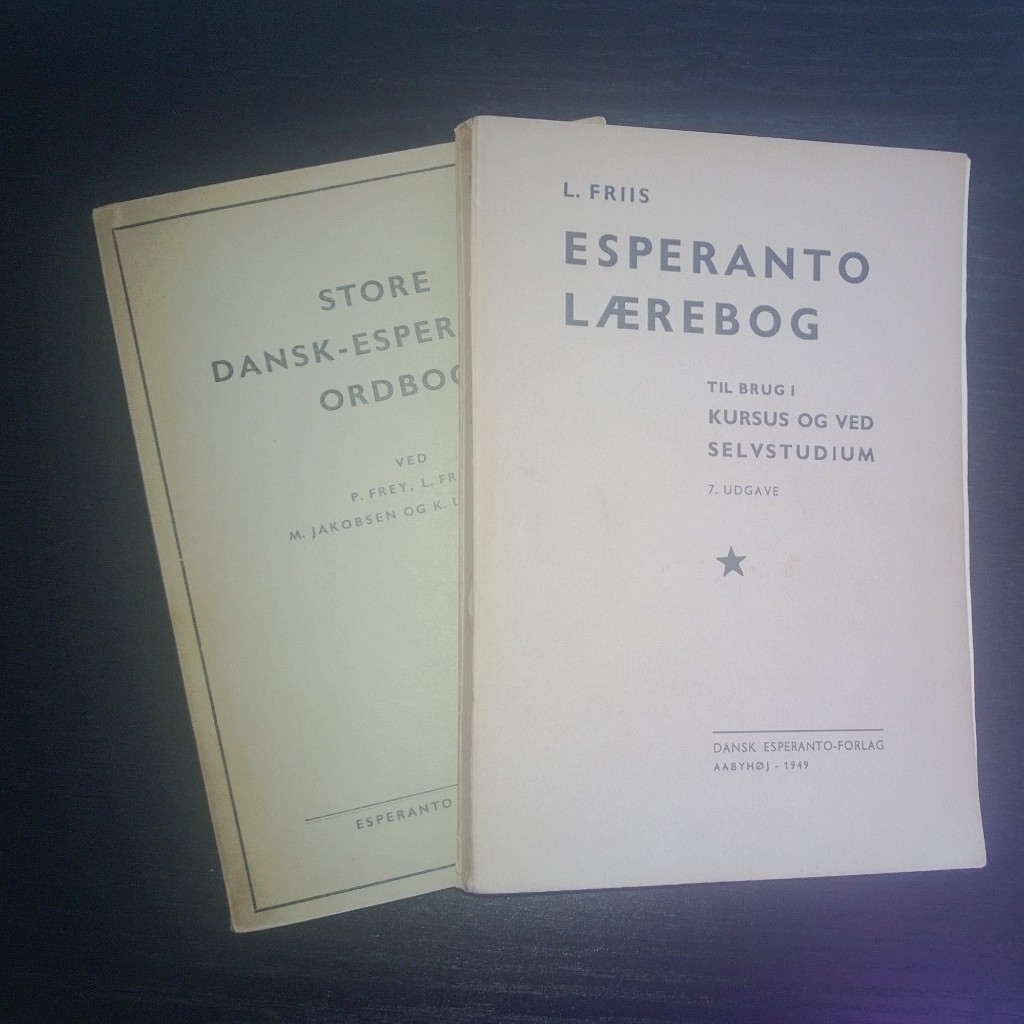Omonia, 13.04.2017
Finest Greek Aperitif Digestive
Tsipouro, honey and herbs
25% alcohol
I wander around a street with no visible name. There are some stalls selling decorated Easter eggs made of porcelain and plastic. All the shops except an instrument shop on the corner are closed for Easter. Its window is full of acoustic guitars in different shades of light brown. A bald guy with a goatee has taken one of them down and stands playing it in the window as if he were on stage. He leans his head back and closes his eyes, surrendering to the music in front of the big imaginary audience on the street.
I sit at an outdoor café and order an orange juice. Jazzy pop music comes out of the open door, and the atmosphere reminds me of Berlin. An Asian street vendor comes up and shows me a 5 cm gadget that can magically thread a needle. I can get it cheap, he insists: “Special price, 5 €”. In the end I go into the café and pay to get away from him and his gadget.
I continue through the quiet streets. It’s a public holiday. The shop shutters are down and people sit chatting at outdoor cafés. The streets are paved and have large pots with trees in the middle. I reach a building that looks like a squat. There are several banners in Greek and two in English, one asking people not to take photographs without permission, and another with the words “Long live revolutionary struggle”.
I pass a beautiful, old building elegantly draped in a transparent, blue tarpaulin and arrive at a square with a small, unkempt, home-grown park. There are lots of hand-painted banners hanging here. A group of young people are sitting under the largest banner. I ask them in English what the signs are about. But they don’t know. They’re on holiday from Spain and are sitting here because they think the banners are pretty to look at.
I carry on and suddenly discover that I’m lost. I stop at a poster with pictures of a black cat photographed from different angles. It’s apparently lost too. By asking around I finally manage to find the main street Akademia.
I continue in the direction of Omonia Square. Almost there, I see that one of the many street vendors is selling plastic passports in different colours. The last in the row is green and has the words “ALIEN´S CARD” printed in gold letters on the front.
